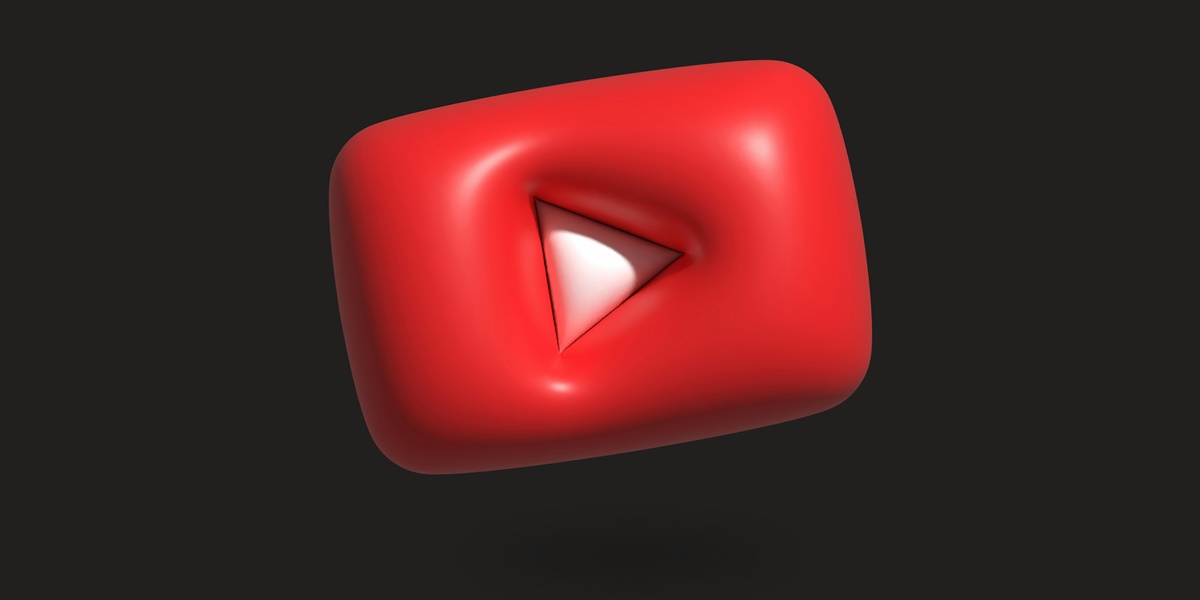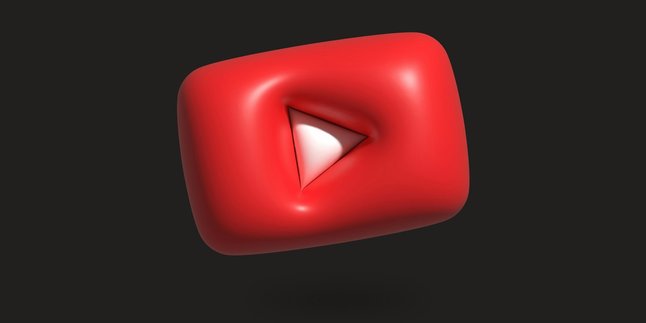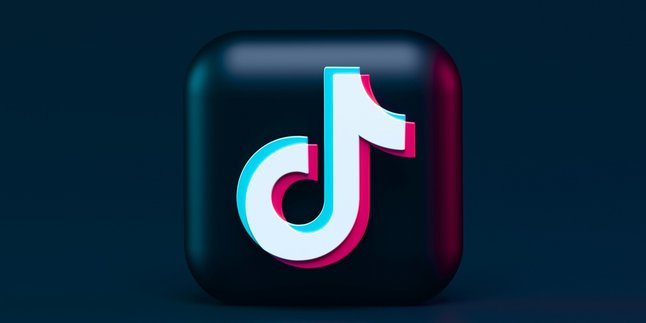Kapanlagi.com - Understanding how to upload videos on YouTube is the first step for anyone who wants to share content with a wider audience. YouTube provides an easy-to-use platform, allowing users to upload videos in various formats and categories. By following the right steps, the upload process can be done quickly and without issues.
To succeed, it is important to know how to upload videos on YouTube with the best quality and optimal settings. From choosing a title, description, to an attractive thumbnail, all these elements play a role in increasing the visibility of the video. By understanding the upload process in detail, creators can reach more viewers and grow their channels.
1. Understanding Video Upload on YouTube
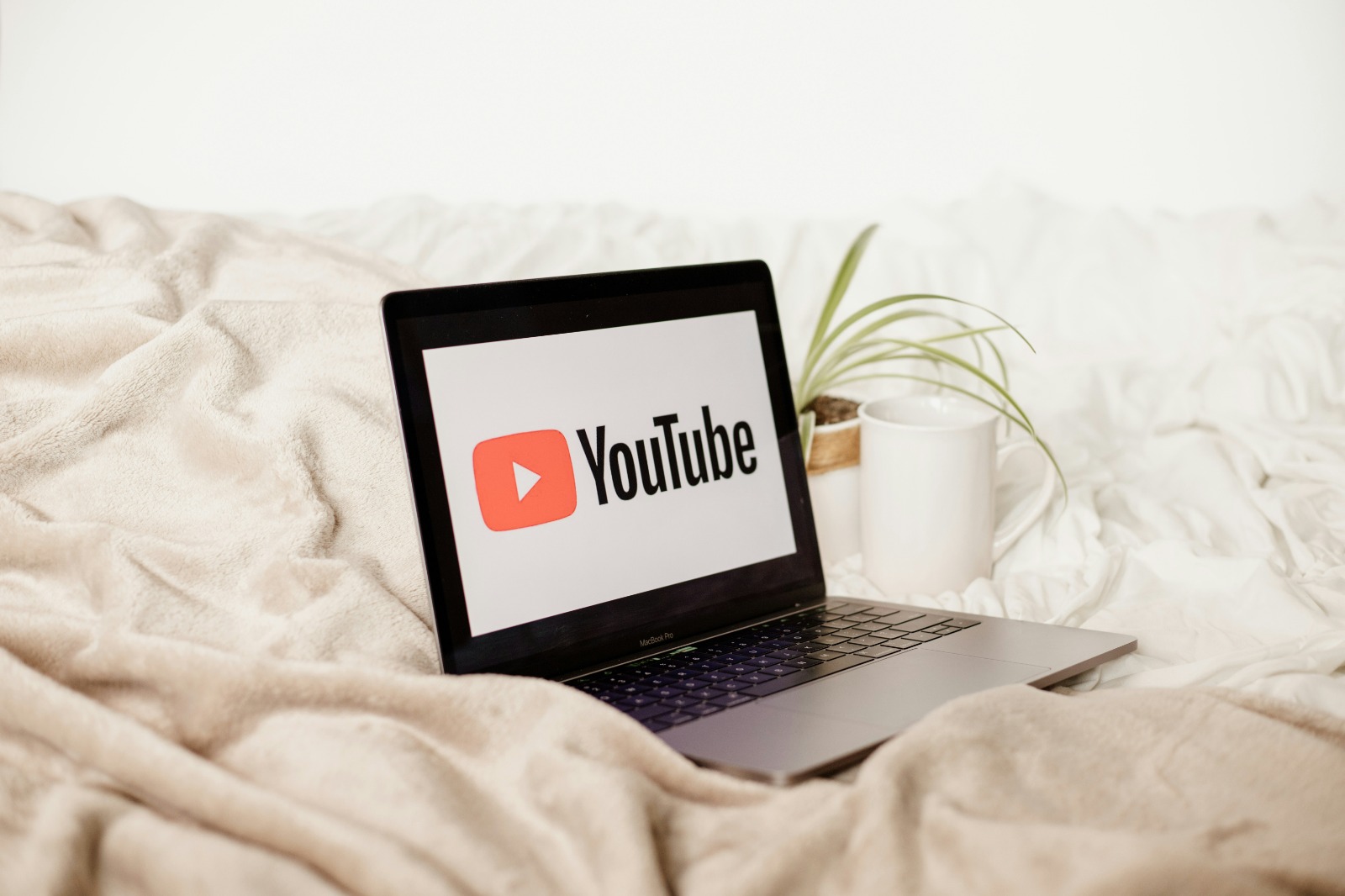
YouTube logo on laptop (credit: unsplash)
Uploading videos on YouTube is the process of uploading and publishing video content to the world's largest video-sharing platform. By uploading videos, creators can share their work with millions of potential viewers around the globe. This process allows anyone to become a content creator and build their own audience.
Uploading a video to YouTube is not just about putting a video file on the platform. It also involves optimizing the content so that it can be found and enjoyed by the right audience. This includes giving an engaging title, informative description, relevant tags, and an eye-catching thumbnail.
For many creators, uploading videos on YouTube has become a means to express creativity, share knowledge, or even build a career. With the monetization potential offered by YouTube, many creators have successfully turned their hobbies into a profitable source of income.
2. Preparation Before Uploading a Video
Before you start uploading videos to YouTube, there are several important preparations you need to make to ensure a smooth upload process and optimal results:
- Ensure optimal video quality: Use a good quality camera and recording equipment. The recommended minimum resolution is 720p, but 1080p or 4K will provide better results.
- Edit the video well: Use video editing software to cut unnecessary parts, add effects or transitions, and improve audio if needed.
- Prepare an attractive thumbnail: Create a custom thumbnail that is eye-catching and accurately represents the content of the video. This is very important to attract clicks from potential viewers.
- Write an SEO-friendly title and description: Research relevant keywords and include them in the title and description of the video. Make sure it remains natural and informative.
- Properly categorize the video: Choose the category that best fits your video content so that it can be easily found by the right audience.
- Prepare relevant tags: Create a list of tags related to the video content. Do not spam with irrelevant tags.
- Set video privacy: Determine whether the video will be published publicly, unlisted, or private.
- Check copyright: Ensure that all content in the video (including music or images) does not violate the copyright of others.
With thorough preparation, your video upload process will be smoother and the results will be more optimal. Good preparation also helps increase the chances of your video being discovered and watched by more people.
3. Steps to Upload a Video on YouTube
Here is a step-by-step guide to uploading videos to YouTube:
- Log in to your YouTube account: Go to youtube.com and sign in using your Google account.
- Click the “Create” icon (camera symbol with a plus sign): You will find it in the top right corner of the page.
- Select “Upload video”: From the dropdown menu that appears, click the “Upload video” option.
- Select the video file you want to upload: You can drag and drop the video file or click “Select files” to choose from your computer.
- Wait for the upload process to finish: The time required depends on the file size and your internet speed.
- Fill in the video details:
- Title: Create an engaging and descriptive title (maximum 100 characters)
- Description: Briefly but informatively explain the content of the video
- Thumbnail: Upload a custom thumbnail or choose from the options provided by YouTube
- Playlist: Add the video to a playlist if necessary
- Audience: Specify whether the video is intended for children or not
- Elements: Add cards or end screens if desired
- Set the video visibility: Choose whether the video will be published as Public, Unlisted, or Private.
- Click “Next” to proceed to the Checks stage: YouTube will check for copyright issues or other policy violations.
- Once the checks are complete, click “Next” again: You will be taken to the Visibility page.
- Select the publication option: You can choose to publish the video immediately, schedule it, or save it as a draft.
- Click “Publish” or “Schedule”: Depending on the option you selected in the previous step.
Congratulations! Your video has been successfully uploaded to YouTube. Don’t forget to always monitor the video’s performance and engage with viewer comments to enhance engagement.
4. Video Optimization for Better Performance

YouTube logo on mobile phone (credit: unsplash)
After successfully uploading a video to YouTube, the next step is to optimize the content to achieve better performance. Here are some optimization strategies you can apply:
- Title optimization: Use the main keywords at the beginning of the title. Make sure the title is engaging yet accurately describes the content of the video. Avoid excessive clickbait.
- Informative description: Write a detailed description of the video content. Naturally incorporate keywords. Add timestamps for longer videos so viewers can jump directly to the parts they want.
- Relevant tags: Use tags that are truly related to the video content. Start with the most specific tags and move to more general ones. Don't spam with irrelevant tags.
- Attractive thumbnail: Create a custom thumbnail that is eye-catching. Use contrasting text and images. Ensure the thumbnail is clear even at small sizes.
- Correct category: Choose the category that best fits your video content. This helps YouTube recommend your video to the right audience.
- Subtitles and closed captions: Add subtitles in various languages to expand your audience reach. This also helps with YouTube SEO.
- Cards and end screens: Utilize the card and end screen features to promote other relevant videos or playlists.
- Search optimization: Research frequently searched keywords related to your video topic. Use tools like Google Trends or TubeBuddy to assist with this process.
- Upload consistency: Create a consistent upload schedule. This helps build audience expectations and increases channel engagement.
- Interaction with viewers: Actively respond to viewer comments. This increases engagement and helps build a community around your channel.
- Promotion on other platforms: Share your videos on social media or other websites to increase reach.
- Performance analysis: Regularly monitor your video metrics using YouTube Analytics. Learn what works and what needs improvement for your next videos.
Remember, optimization is an ongoing process. Keep experimenting with different strategies and learn what is most effective for your channel and audience. With consistency and continuous improvement, you can significantly enhance your video performance and the growth of your YouTube channel.
5. How to Monetize YouTube Videos
Monetizing YouTube videos allows creators to earn revenue from the content they produce. Here are some ways to monetize YouTube videos:
- YouTube Partner Program (YPP):
- Requirements: At least 1000 subscribers and 4000 watch hours in the last 12 months
- Earnings from ads displayed on videos
- Creators receive a share of the ad revenue
- Super Chat and Super Stickers:
- Viewers can pay to highlight their messages in live chat
- Creators receive a majority of these payments
- Channel Memberships:
- Viewers pay a monthly fee for access to exclusive content
- Creators can offer various membership levels
- Merchandise Shelf:
- Sell official channel merchandise through YouTube
- Integration with e-commerce platforms like Teespring
- YouTube Premium:
- Creators receive a share of YouTube Premium revenue based on watch time from Premium subscribers
- Brand Deals and Sponsorship:
- Direct collaboration with brands to promote their products or services
- Can be in the form of product placement, reviews, or dedicated videos
- Affiliate Marketing:
- Promote products with affiliate links in the video description
- Creators earn a commission from generated sales
- Crowdfunding:
- Using platforms like Patreon to receive donations from fans
- Can offer special rewards for supporters
- Content Licensing:
- Selling the license to use your videos to media or brands
- Suitable for viral videos or unique content
- Online Courses or Digital Products:
- Using YouTube as a platform to promote courses or digital products that you sell
It is important to remember that successful monetization requires consistency in creating quality content and building a loyal audience. Always adhere to YouTube's policies to avoid demonetization or account suspension.
6. Video Performance Analysis
Video performance analysis is a crucial step to understand the effectiveness of your content and plan future strategies. YouTube provides comprehensive analytics tools through YouTube Analytics. Here are important aspects to consider when analyzing video performance:
- Key Metrics:
- Number of views: How many people watched your video
- Watch time: Total time spent by viewers watching your video
- Retention rate: How long the average viewer stays to watch your video
- Engagement (likes, dislikes, comments, shares): Indicates how engaging your content is to viewers
- Audience Demographics:
- Age and gender of viewers
- Geographic location
- Devices used for viewing
- Traffic Sources:
- YouTube search: How well your video performs in YouTube search results
- Suggested videos: How often your video is recommended after another video
- External sources: Traffic from outside YouTube (e.g., from social media or websites)
- Audience Retention:
- Audience retention graph: Shows where viewers tend to stop watching
- Identify the most interesting or boring parts of the video
- Card and End Screen Performance:
- Click-through rate (CTR) for cards and end screens
- Effectiveness in directing viewers to other videos
- YouTube Search Performance:
- Keywords that bring traffic to your video
- Your video's position in search results for specific keywords
- Subscriber Growth:
- Number of new subscribers gained from a specific video
- Overall subscriber growth trends for the channel
- Monetization Performance (if enabled):
- Estimated revenue: Estimated earnings from ads
- CPM (Cost Per Mille): Earnings per 1000 views
- Ad types: The most effective ad types for your video
By understanding these metrics, you can:
- Identify the types of content that your audience enjoys the most
- Optimize upload times based on when your viewers are most active
- Improve parts of the video that have low retention
- Focus on keywords that drive the most traffic
- Adjust your content strategy to increase engagement and subscriber growth
Remember to regularly analyze data and use the insights gained to continuously improve the quality and relevance of your content. Consistent analysis is key to sustainable YouTube channel growth.
7. Tips for Creating Quality Video Content
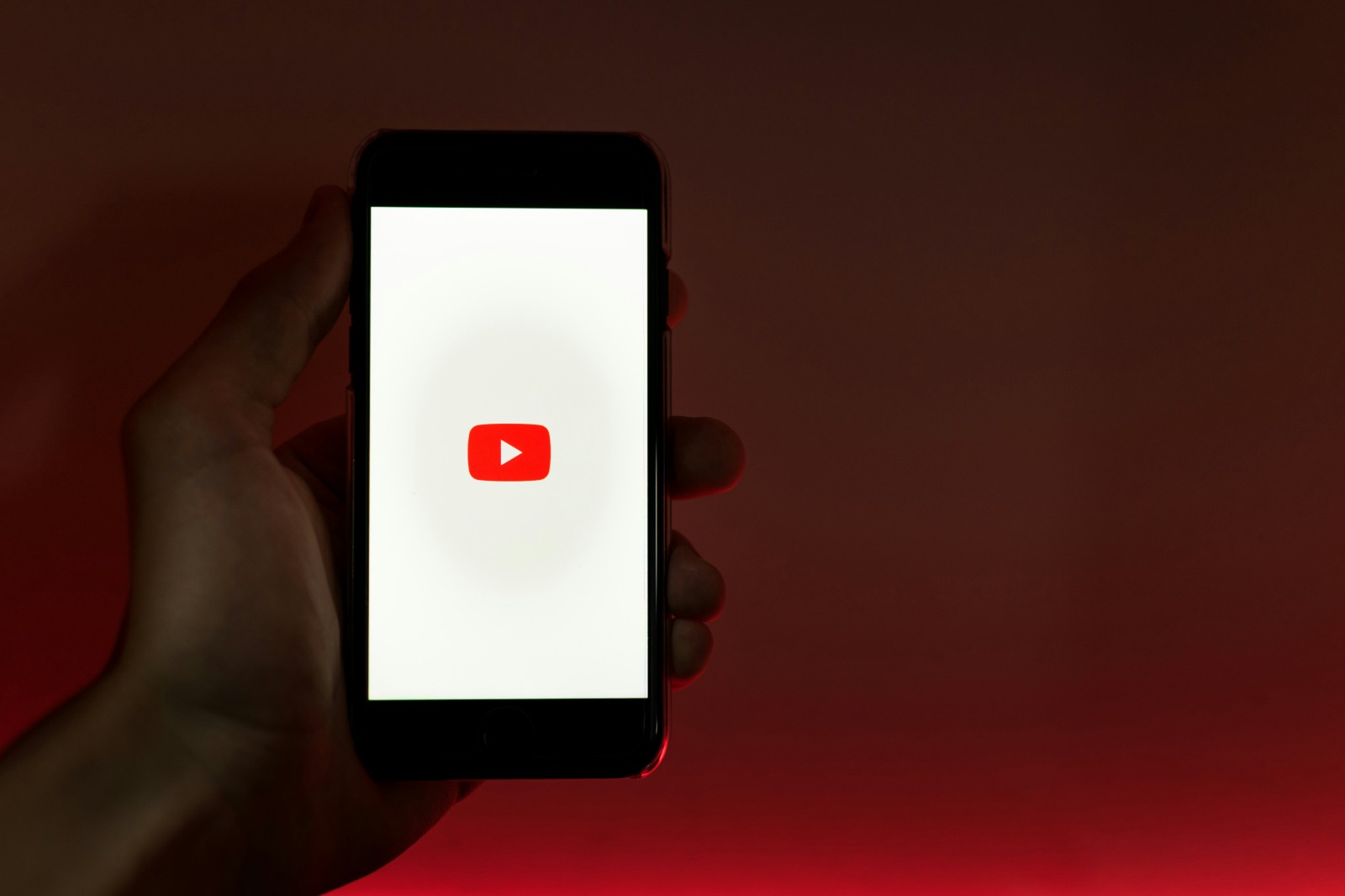
YouTube logo on mobile phone (credit: unsplash)
Creating quality video content is the key to success on YouTube. Here are some tips to improve the quality of your videos:
- Plan Well:
- Create a script or outline before you start recording
- Set clear goals for each video
- Research the topic thoroughly to provide accurate and useful information
- Focus on Audio Quality:
- Invest in a good microphone
- Record in an environment with minimal noise
- Use audio editing software to improve sound quality if necessary
- Pay Attention to Lighting:
- Utilize natural light if possible
- Invest in simple lighting equipment for more professional results
- Avoid strong backlighting that can make the subject look dark
- Camera Stability:
- Use a tripod or stabilizer to avoid shaky footage
- If recording with a smartphone, use a gimbal for more stable results
- Interesting Frame Composition:
- Learn and apply the rule of thirds
- Pay attention to the background so it’s not too busy or distracting
- Effective Editing:
- Cut unnecessary parts to keep the video pace dynamic
- Use smooth transitions between scenes
- Add appropriate background music to enhance the mood of the video
- Branding Consistency:
- Use a consistent intro and outro
- Apply uniform color grading across all videos
- Use your channel logo or watermark consistently
- Interactivity:
- Encourage viewers to interact (for example, by asking questions)
- Use YouTube cards to direct to other relevant videos
- Add a clear call-to-action at the end of the video
- Value Addition for Viewers:
- Always provide useful information or entertainment
- Create unique content that stands out from what already exists
- Showcase your expertise or unique perspective on the topic discussed
- Mobile Optimization:
- Ensure text and graphics are clearly visible when viewed on mobile devices
- Consider creating a vertical video version for Stories or Shorts
Remember, content quality is not just about technical aspects, but also about the value you provide to your audience. Keep learning, experiment with new ideas, and always seek feedback from your audience to continuously improve content quality.
8. Current Video Content Trends on YouTube
Following the latest content trends on YouTube can help creators stay relevant and attract more viewers. Here are some popular video content trends currently on YouTube:
- YouTube Shorts:
- Short vertical videos (up to 60 seconds)
- Suitable for light and entertaining content
- Competing with platforms like TikTok and Instagram Reels
- Live Streaming:
- Direct interaction with viewers
- Popular for gaming, Q&A, live tutorials, or virtual events
- ASMR Videos (Autonomous Sensory Meridian Response):
- Content that stimulates relaxation sensations through sound
- Variety of themes from whispering to everyday sounds
- Educational and Tutorial Content:
- How-to videos and online learning are increasingly popular
- Covers a range of topics from academics to practical skills
- Vlogs and Personal Storytelling:
- Sharing personal experiences and daily life
- Building a closer connection with the audience
- Reaction Videos:
- Recording reactions to popular or viral content
- Often combined with commentary or analysis
- Challenges and Pranks:
- Entertaining content that often goes viral
- Important to remain mindful of ethics and safety
- Unboxing and Product Reviews:
- Opening and reviewing new products
- Popular across various categories from technology to toys
- Mindfulness and Mental Health Content:
- Meditation, yoga, or mental health tips videos
- Responding to the growing awareness of the importance of mental health
- Behind-the-Scenes and Creative Process:
- Showing the process behind content or product creation
- Providing interesting insights for viewers
- Interactive Content:
- Videos that involve viewer participation
- For example, choose-your-own-adventure videos or interactive quizzes
- Mini Documentaries:
- In-depth exploration of specific topics
- Usually longer and requiring more intensive research
It is important to remember that following trends does not mean you have to ignore your niche or passion. On the contrary, try to adapt these trends into your own style and content themes. Always prioritize authenticity and value for your audience. Trends can change quickly, so stay flexible and ready to adapt to changing audience preferences.
9. Equipment Needed to Create Videos
To create quality YouTube videos, you don't always need expensive equipment. However, investing in some basic equipment can greatly enhance your production quality. Here is a list of equipment you might consider:
- Camera:
- A modern smartphone with a good quality camera can be a great starting point
- A DSLR or mirrorless camera for more professional video quality
- An action camera like a GoPro for outdoor or sports content
- A high-quality webcam for vlogging or streaming
- Microphone:
- A lavalier mic (clip-on) for mobility
- A shotgun mic to capture audio from a distance
- A USB condenser mic for desktop recording
- A wireless mic set for freedom of movement
- Lighting:
- A ring light for even face lighting
- A softbox for soft and professional lighting
- LED panels for flexible lighting
- A reflector to make use of natural light
- Tripod or Stabilizer:
- A standard tripod for static shots
- A gorilla pod for flexible placement
- A gimbal for stable shots while moving
- Background and Set:
- A green screen for virtual background effects
- A backdrop stand and backdrop fabric for simple sets
- Props and decorations according to the content theme
- Computer and Editing Software:
- A computer or laptop with sufficient specifications for video editing
- Editing software like Adobe Premiere Pro, Final Cut Pro, or DaVinci Resolve
- Free editing software like OpenShot or DaVinci Resolve (free version) for beginners
- Storage:
- An external hard drive or SSD to store raw footage
- Cloud storage for backup and collaboration
- Additional Accessories:
- High-speed memory cards
- Backup batteries and chargers
- Cables and necessary adapters
- A pop filter for the microphone
- Headphones for audio monitoring
- Streaming Equipment (if doing live streaming):
- A capture card for streaming from a gaming console
- Streaming software like OBS Studio
- A high-quality streaming webcam
Remember, you don’t need to buy all this equipment at once. Start with what you have and gradually upgrade your equipment as your channel grows. The main focus should remain on the quality of your content and your creativity in utilizing the available equipment.
10. Video Editing Techniques for Beginners

YouTube homepage display (credit: unsplash)
Video editing is a crucial skill for YouTube creators. Here are some basic editing techniques that beginners can learn:
- Cutting and Trimming:
- Cutting out unnecessary parts of the video
- Rearranging the order of clips for better flow
- Using J-cuts and L-cuts for smoother transitions between scenes
- Transitions:
- Using fade in/out for smooth scene changes
- Applying dissolve for more gradual transitions
- Using wipe or slide for more dynamic effects
- Avoid using transitions that are too excessive or flashy
- Color Correction and Color Grading:
- Adjusting brightness, contrast, and saturation for a better look
- Applying color grading to create a specific mood or aesthetic
- Using LUT (Look-Up Tables) to speed up the color grading process
- Audio Editing:
- Balancing audio levels between clips
- Removing background noise
- Adding background music and sound effects
- Using fade in/out on audio for smooth transitions
- Text and Graphics:
- Adding titles, subtitles, and lower thirds
- Creating consistent intros and outros
- Using simple motion graphics to explain concepts
- Keyframing:
- Animating the position, scale, or rotation of elements in the video
- Creating zoom or pan effects on static images
- Speed Ramping:
- Speeding up or slowing down certain parts of the video
- Creating dramatic or comedic effects with speed changes
- Green Screen (Chroma Key):
- Removing the green background and replacing it with another image or video
- Ensuring proper lighting while shooting for better results
- Picture-in-Picture:
- Displaying two or more videos simultaneously in one frame
- Useful for reaction videos or tutorials that require demonstrations
- Video Stabilization:
- Using stabilization features in editing software to fix shaky footage
- Applying this technique carefully to avoid distortion effects
When learning these techniques, remember a few tips:
- Start with simple and free editing software like DaVinci Resolve or OpenShot
- Learn keyboard shortcuts to speed up the editing process
- Always save your projects regularly and make backups
- Don’t hesitate to experiment with various effects, but avoid overusing them
- Watch online tutorials and practice consistently to improve your skills
Remember, good editing should not be overly flashy. The goal is to enhance the delivery of the message or story in your video, not just to showcase technical skills. With practice and consistency, you will find an editing style that suits your content and audience.
11. YouTube Channel Promotion Strategies
Promoting your YouTube channel is an important step to attract more viewers and increase the visibility of your content. Here are some effective strategies to promote your YouTube channel:
- YouTube SEO Optimization:
- Use relevant keywords in the title, description, and tags of your videos
- Create attractive and informative thumbnails
- Add subtitles to enhance accessibility and SEO
- Use cards and end screens to promote other videos
- Upload Consistency:
- Create a regular and consistent upload schedule
- Inform your audience about this schedule so they know when to expect new content
- Collaborate with Other Creators:
- Find creators with a similar niche to collaborate with
- Engage in mutually beneficial collaborations to reach new audiences
- Promotion on Social Media:
- Share your videos on other social media platforms like Instagram, Twitter, or Facebook
- Create short teasers or highlights to grab attention
- Use relevant hashtags to increase reach
- Engagement with the Community:
- Actively respond to viewer comments
- Create a community on platforms like Discord or Facebook Group
- Conduct Q&A sessions or live streaming to interact directly with viewers
- Optimize Playlists:
- Create thematic playlists to group similar videos
- Use keyword-rich descriptions for playlists
- Utilize YouTube Shorts:
- Create short versions of your content for YouTube Shorts
- Use Shorts to promote your longer videos
- Cross-Promotion with Website or Blog:
- Embed your YouTube videos on your website or blog
- Write articles that support or complement your video content
- Email Marketing:
- Build a mailing list to inform subscribers about new videos
- Send newsletters with highlights of the latest and upcoming content
- YouTube Ads:
- Use Google Ads to promote your videos or channel
- Target relevant audiences based on interests and demographics
- Participate in Online Forums and Communities:
- Participate in discussions on forums relevant to your niche
- Share your knowledge and include links to relevant videos (if permitted)
- Optimize Channel Art and Description:
- Create attractive and professional channel art
- Write an informative channel description that includes keywords
- Utilize Trends and Viral Topics:
- Create content that responds to trends or viral topics in your niche
- Use trending hashtags to increase visibility
Remember, effective promotion takes time and consistency. Focus on building relationships with your audience and providing value through your content. Combine these various strategies and continuously evaluate which ones are most effective for your channel. With patience and hard work, you will see organic growth in both subscribers and views.
12. FAQs About Uploading Videos on YouTube
Here are some frequently asked questions about uploading videos on YouTube along with their answers:
- Q: How long does it take to upload a video to YouTube?
A: The upload time depends on the size of the video file and your internet speed. A 5-minute video in HD quality can take 1-5 minutes with a good internet connection. Longer or higher quality videos will take more time.
- Q: Is there a file size limit for videos uploaded to YouTube?
A: Yes, the file size limit for most accounts is 128 GB or 12 hours, whichever comes first. Verified accounts may have a higher limit.
- Q: What video formats are supported by YouTube?
A: YouTube supports various video formats including .MOV, .MPEG4, .MP4, .AVI, .WMV, .MPEGPS, .FLV, 3GPP, and WebM. However, it is recommended to use the MP4 format with H.264 video codec for best compatibility.
- Q: How can I edit a video after uploading?
A: You can make some minor edits such as trimming the video, adding blur, or changing the background music through YouTube Studio. For major changes, it is better to edit the video offline and re-upload it.
- Q: Can I schedule the publication time of a video?
A: Yes, when uploading a video, you can choose the option to schedule the publication time. This allows you to upload the video in advance and publish it at a time you specify.
- Q: How do I add subtitles to my video?
A: You can add subtitles through YouTube Studio. Select your video, click “Subtitles,” then choose the language and method for adding subtitles (upload file, type/paste text, or automatic transcription).
- Q: Can I use music from famous artists in my video?
A: Using copyrighted music without permission can lead to your video being demonetized or removed. Use music from the YouTube Audio Library or other royalty-free sources to avoid copyright issues.
- Q: How long does it take YouTube to process a video after uploading?
A: Processing time varies depending on the length, resolution, and format of the video. Short videos may take just a few minutes, while long and high-quality videos can take several hours.
- Q: Can I change the video thumbnail after uploading?
A: Yes, you can change the thumbnail at any time through YouTube Studio. Select your video, click “Details,” then scroll to the Thumbnail section and choose “Change.”
- Q: How can I tell if my video violates copyright?
A: YouTube has a Content ID system that automatically checks videos against a database of copyrighted content. If a match is found, you will receive a notification in YouTube Studio.
Understanding the answers to these common questions can help you manage your YouTube channel more effectively. Always pay attention to the latest YouTube policies and community guidelines to ensure your content complies with the platform's rules.
Find more interesting and useful reviews at kapanlagi.com. If not now, when?
13. Conclusion
Mastering how to upload videos on YouTube is an important step in your journey as a content creator. From initial preparation to post-upload optimization, each stage plays a crucial role in determining the success of your videos and your channel as a whole.
Remember that consistency and content quality are the key factors. Keep learning and adapting to the latest trends, but maintain the uniqueness and value that you offer to your audience. Utilize the analytics tools provided by YouTube to continuously improve your content strategy.
Don't forget that building a loyal audience takes time and patience. Focus on creating content that is both useful and entertaining, while continuously improving your technical skills in video production and editing.
By applying the tips and strategies discussed in this article, you have a solid foundation to start or grow your YouTube channel. Happy creating and best of luck on your journey as a YouTube creator!
(kpl/psp)
Disclaimer: This translation from Bahasa Indonesia to English has been generated by Artificial Intelligence.
